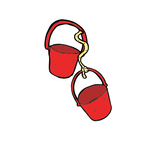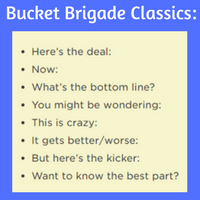Are you satisfied with the “dwell time” on your blog? Many popular bloggers see a direct correlation between use of transitional phrases and longer dwell times. That drove me to ask just what is a transitional phrase and how can I incorporate these magical phrases in my writing?
Sometimes the honest truth can sting a bit (or a lot)!
Describing a post as boring seems harsh but some of them are pretty dry and lackluster. Sadly, I’ve authored a few of those myself. But I now have an action plan to improve that you may want to try also.
Read on to discover how transitional phrases can help ….
What is a Transitional Phrase and Why Should Bloggers Care?
Transitional words or phrases create a smooth flow or bridge between sections, paragraphs, or even sentences. Their value is in subconsciously nudging readers to continue to the end of a post instead of bailing partway through.
Sounds good, right?
Several decades ago a well-known copywriter, Maxwell Ross, coined a more colorful term for these linking phrases. He called them “bucket brigades”. Why? Because these phrases maintained the flow of ideas in his sales letters much like the unbroken human chains that once passed water buckets from hand to hand to put out fires.
Successful bloggers have adopted the technique and used bucket brigade phrases to slide easily from point to point and increase engagement.
- Evoke curiosity
- Give a hint that something big is coming
- Grab readers’ attention
- Create empathy and agreement
- Inspire action
To begin with, we all know that the amount of time that visitors spend on our website is an SEO ranking factor, right? Therefore, boosting dwell time may convince Google that you have high-quality content worthy of ranking in the SERPs. Moreover, studies will show that people who read your entire post are far more likely to convert.
Based on the above, it seems clear to me that bucket brigades can be a super useful writing technique to add to your blogging toolkit. And, because examples can really help people put theory into context, I gathered some practical examples.
You can use transitional phrases to improve your blog, and here’s how.
Create Smooth Transitions Between Elements of Your Article
In some respects, the structure of a blog post isn’t much different than the formula drilled into us in school. A typical post has the followings sections:
- an introduction
- the body
- a conclusion
The various sections serve distinct purposes. Each is important, but sometimes we get so caught up in making our points and presenting our arguments that we forget to tie the pieces of our post together. Movement from one section to the next is not always as logical as it could be and the choppiness can cause our readers to become confused.
Confusion then encourages our readers to jump ship and go elsewhere for information. I think we can all agree, that’s not what we want. So, we need to find ways to pique curiosity, maintain interest, and keep the conversation going.
Try these practical tips….
The Introduction
In your introductory paragraph, you tell readers what you’re going to talk about. Hopefully, you identify a problem you’re going to help them solve. You may want to start out with an intriguing question right out of the shoot because questions drive us to search for the answer.
Now, you need to shift gears from stating your purpose to actually sharing your tips. To signal this shift in gears, insert a short and conversational statement or question:
- Let’s dive right in….
- Shall we get started?
- So, let’s get to it….
These are just three of many ways you can make it clear that we’re moving into the meat of the post.
The Body
In the body of your article, you’ll deliver that solution you promised and typically present three or four supporting arguments or points of view. Obviously, you don’t want to overdo it, but there are lots of opportunities to use bucket brigades within this section to keep things flowing and to make your arguments more compelling.
One possibility is to incorporate words or phrases known as conjuncts to move smoothly between paragraphs.
For example, try these:
- To begin with….
- In addition….
- Moreover….
- Lastly….
Each paragraph within the “body” section should support the overall theme with facts. You can pull readers in and hammer home details with lead-ins like these:
- Here’s a case in point….
- Let me elaborate….
- But wait, that’s not all….
But that’s really just the tip of the iceberg. There are so many variations on these powerful phrases, and top bloggers use multiple forms to keep readers glued to their sites. As an example, Brian Dean at Backlinko extolls the virtues of bucket brigades in this post and talks about the role they’ve played in increasing average session times on his blog to over 4 minutes.
Wow!
The image below displays a short list that Brian deems classic.
If you’re excited to start editing your content with engaging transitions that readers find irresistible, here’s an INSANELY expansive compilation of 502 Bucket Brigades that will get your creative juices flowing. Pick and choose from the list or use it as inspiration to write your own. Either way, you have got to check this out!
The Conclusion
The conclusion to your blog post is where you’ll reiterate and recap critical points. This final component presents a perfect opportunity to make your post sticky and memorable by empathizing with your audience and promoting agreement.
Consider expressions such as these:
- I know exactly what you’re thinking….
- I know you’re with me on this one….
But you can also inspire your readers to take desired actions.
Ask readers to:
- provide feedback
- pose additional questions in the comments section
- share your post on social media
Wrapping Up
Writing is a skill that comes more naturally to some than others. But with a little practice, we can all learn to phrase things in ways that will better capture the attention of our readers.
Wouldn’t you agree?
Transitional phrases are invariably characterized as the lubricant that compels website visitors to effortlessly glide from beginning to end of a blog post. I find that analogy to be absolutely captivating and I sincerely hope it resonates with you as well.
Naturally, you can’t transform a post without substance or merit with nothing more than well-placed conversational expressions. But if you’ve written informative content that addresses problems facing your niche, bucket brigades may be the path that takes your blog to the next level.
If you’re fascinated by this subject but haven’t yet taken the plunge and created your own blog, I invite you to read this post that details all the advantages of the online community where I began and continue to host my blog. You can also create a free account now by clicking the banner below.
Today’s post on what is a transitional phrase includes some stellar resources for applying these gems to plant and cultivate curiosity in your next blog post. Why not try them out?
So, What’s Going On With You?
Have you already experimented with transitional phrases in your blog posts? Will you share some of your favorites in the comment section below? And, If you enjoyed this post, please don’t forget to share it.
Like It? Please Share It!





This is so helpful, thank you! I sometimes find my writing to be a bit bland and it doesn’t always flow very well. I think I might start implementing the tips that you’ve provided here, as I think they’ll really improve my writing. Once again, thank you so much for sharing this, I’ve now bookmarked it to use for reference!
Hi Joann,
Is there a blogger who doesn’t love to hear their site’s been bookmarked for reference? 🙂 I doubt it and I thank you for the compliment. I think it’s fair to say that very few bloggers have any experience with writing in a conversational tone. That certainly wasn’t stressed in school. Like most skills, it takes some practice and this is where transitional phrases really shine. I became a convert after discovering that top bloggers like Brian Dean, Neil Patel, and Jon Morrow are huge fans of bucket brigades. It’s tough to argue when they dole out advice.
Please stop back and let me know how this technique works for you. And, thanks for chiming in!
Dear Linda
Thank you for an amazingly informative and encouraging post! Writing does not come naturally to me, but I like blogging, so what better thing to do than to consult all the good advice you give here and to check out all the resources you kindly provide!
Regards,
Alenka
Hi Alenka,
Welcome to my blog. Thanks for reading and engaging. Blogging is an activity that often doesn’t come easily or naturally. But if you enjoy it and are passionate about your subject matter, there are steps you can take to make your writing more engaging. Adding transitional phrases, or “bucket brigades” as they’re frequently called, is one of those steps. They make your writing more conversational and more like chatting with a friend.
Wouldn’t you agree?
I appreciate you stopping by. And, I hope you’ll pop back at some point and fill me in on how adding transitional phrases worked out for you. Good luck!